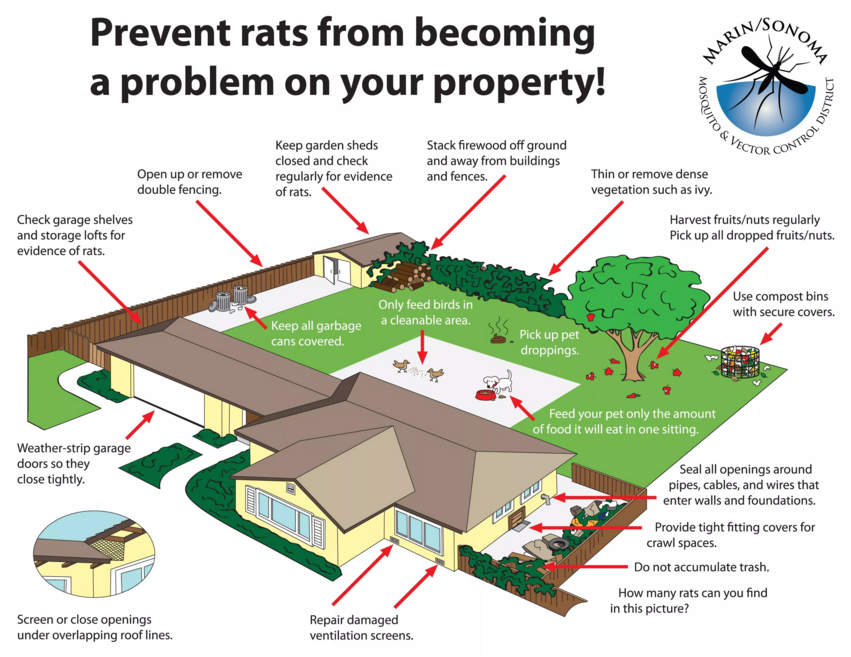
RODENT CONTROL & RAPTORS
Rodenticides can have a detrimental impact on raptors. Raptors survive on rodents for food and when they ingest prey that has been poisoned, it can prove fatal for the birds. There are better ways for humans to control rodents that allow raptors to thrive in their natural environment.
Rodenticides and Wildlife
How rodenticides affect wildlife: Click to enlarge.
Many of the raptors we treat are suffering from the effects of rodenticides which are used by people and businesses to control rat and mouse populations. Unfortunately, these poisons are indiscriminate killers and often harm wildlife as well as their intended targets.
Rodenticide is any poison used to kill rodents. The poison does not kill the rodents immediately but may slow them down making them “easy prey” for raptors and other wild predators. When poisoned rodents are consumed by wildlife, the poison causes secondary poisoning which is often lethal. Apart from wildlife, rodenticides can also impact domestic animals and pets.
One poisoned rodent can kill a family of six owls.
Humane Rodent Control
Click to enlarge.
There are many humane rodent control alternatives to rodenticides that are cheaper and more effective.
The most effective natural rodent control for homes and businesses is exclusion, in other words, preventing rodents from entering the building. This is accomplished by sealing off access points and removing potential food and nesting material. These attractants can be such simple things as uncovered trash bins, bird seed fallen from feeders, and dense vegetation.
There are many professionals who can provide humane rodent control, often at a lower cost than using rodenticides. Raptors and other wildlife need your advocacy in order to prevent fatal poisoning.
Raptors as Rodent Control
Raptors such as owls and hawks are excellent natural predators.
A Barn Owl will eat 4-6 voles or vole sized rodents a night. A pair of nesting Barn Owls feeding a family of 6 will consume almost 40 rodents per night. A family of Barn Owls (from a single nesting box) can consume 3,000 to as many as 5,000 rodents in a single 4 month breeding cycle. One adult Barn Owl can consume 500 Gophers a year. They prey on Gophers, Rats, Mice, Rats, Voles, Moles and more. Barn Owls are cavity nesters and are easy to attract to a location by installing nest boxes.
Raptor perching and owl boxes will encourage our local raptor species to take up residence or use your property as hunting territory. Boxes are meant to create nesting and roosting habitat for our cavity nesting species- Barn Owls, American Kestrels and Western Screech Owls.



